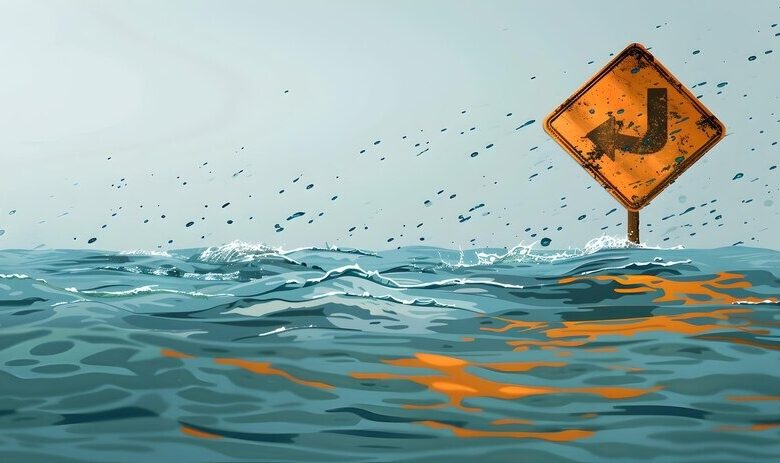Coastal Flood Warning: Understanding Its Impact and Preparedness

Coastal flooding, often triggered by natural events such as storms, tides, or heavy rainfall, is a significant risk to coastal communities worldwide. When meteorologists issue a Coastal Flood Warning (or “aviso de inundación costera” in Spanish), it serves as a crucial alert to residents and authorities that hazardous conditions are imminent or already occurring. In this article, we will explore the nature of coastal flood warnings, their causes, impacts, and how people can prepare for such emergencies to mitigate damage and ensure safety.
What is a Coastal Flood Warning?
A Coastal Flood Warning is an official alert issued by weather agencies, such as the National Weather Service (NWS) in the United States, warning coastal areas of impending flooding due to a combination of factors such as storm surges, tides, and wind. These warnings are critical in giving residents time to protect their property and evacuate if necessary.
Coastal flood warnings differ from other types of flood alerts, such as flash floods or river floods, because they are specific to coastal areas where the ocean interacts with the land. This interaction, combined with storms, can cause seawater to move inland, inundating areas that are typically dry. The warnings may be issued several hours or even days in advance, depending on the severity of the threat.

Causes of Coastal Flooding
Several natural phenomena can lead to a coastal flood, and understanding these causes is essential for grasping the nature of the warnings. The primary causes include:
- Storm Surge: A storm surge occurs when strong winds from a storm push water toward the shore, causing a significant rise in sea level. Storm surges are often associated with hurricanes, cyclones, or other large storms and can result in severe flooding, especially in low-lying coastal areas.
- High Tides: Coastal areas that are vulnerable to high tides can experience flooding even without a storm. A “king tide” or “spring tide,” which is an exceptionally high tide, can cause the sea to spill over onto land, flooding coastal roads and homes.
- Heavy Rainfall: Intense rain can overwhelm drainage systems, especially in urban areas. When combined with a storm surge or high tide, heavy rainfall can exacerbate the flooding, leading to more extensive damage.
- Climate Change and Rising Sea Levels: Over the long term, rising sea levels caused by global warming increase the risk of coastal flooding. Higher sea levels mean that storms and high tides have a greater starting point, making them more likely to flood coastal areas.
Impacts of Coastal Flooding
Coastal flooding can cause a wide range of damages, both in the short term and long term. The severity of the impact often depends on the area’s geography, the strength of the storm, and the preparedness of the community. Key impacts include:
- Damage to Infrastructure: Floodwaters can damage roads, bridges, buildings, and public utilities like electricity and water supply systems. Infrastructure repairs after severe flooding can be costly and time-consuming.
- Displacement of Communities: Coastal flooding often forces people to evacuate their homes and seek shelter elsewhere, sometimes permanently if the damage is extensive. The emotional and economic toll on displaced families can be profound.
- Environmental Damage: Flooding can erode beaches, damage wetlands, and pollute water sources. Saltwater from the ocean can also contaminate freshwater supplies, making it harder for communities to access clean water.
- Economic Losses: The financial impacts of coastal flooding can be devastating. Businesses may be forced to close temporarily or permanently due to damage, and tourism in coastal areas often suffers after a flood event.

How to Prepare for Coastal Flooding
While coastal flood warnings are a vital tool in helping people prepare, the key to minimizing damage is proactive readiness. Here are some steps individuals and communities can take to prepare for a coastal flood:
- Monitor Weather Alerts: Stay informed by monitoring local news, weather apps, and the National Weather Service (or equivalent agency). Heed any evacuation orders and ensure your family has a clear plan for where to go if a warning is issued.
- Create an Emergency Plan: Families should have a flood preparedness plan that includes identifying a safe evacuation route, preparing an emergency kit with essential supplies, and ensuring all family members know the plan.
- Protect Property: Homeowners in coastal areas should take steps to flood-proof their property, such as elevating electrical systems, installing flood barriers, and using sandbags to block doorways and windows.
- Have an Evacuation Plan: Know the safest routes to higher ground and ensure your vehicle has enough fuel. Being ready to leave quickly can be lifesaving when a flood warning is issued.
- Insurance Coverage: Ensure that your home insurance policy covers flooding. Standard policies often do not include flood damage, so purchasing separate flood insurance is essential for those living in high-risk areas.
The Role of Local Authorities and Governments
Governments play a critical role in managing and mitigating the effects of coastal flooding. By developing coastal flood management plans, investing in resilient infrastructure, and ensuring that warning systems are efficient, authorities can protect communities more effectively.
Local authorities often have to make difficult decisions during a coastal flood warning, such as whether to order mandatory evacuations or close public services. Their role in disseminating accurate information and providing support during and after a flood event is vital to community safety and recovery.
Conclusion
A coastal flood warning is a critical alert that allows residents and local authorities to take action before a dangerous event occurs. By understanding the causes and impacts of coastal flooding, individuals can better prepare and protect their families and properties. Awareness and preparation are key to minimizing the damage caused by these natural disasters, making coastal areas more resilient to future flooding threats.
